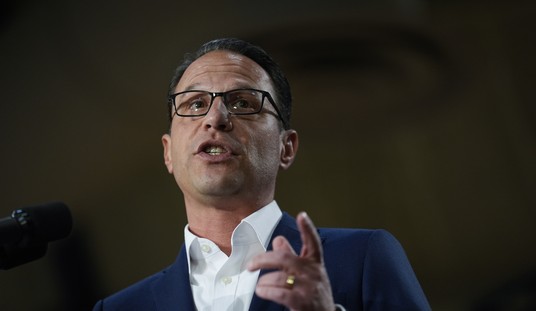Decision Points, the recently published memoir of President Bush, shows the former chief executive to be an admirable man driven by conviction, not polls. The false caricature of him as an evil idiot willing to lie so young soldiers can die for his war profiteer buddies is blown away. At the very least, readers will come away with an appreciation for the very tough decisions he had to make.
But at the same time, a trend of mismanagement in the Bush administration is seen, whether it is because of incompetence or the impossibility of trying to steer a ship the size of the federal government.
Bush’s repeated use of the word “blindsided” shows there was a major problem with the dissemination of important information. In one case, the acting attorney general, director of the FBI, and other Justice Department officials all said they would resign from their positions if President Bush extended the Terrorism Surveillance Program without their recommended improvements. Bush did not even know about the opposition until one day before the expiration date. He reacted by implementing the suggested changes, avoiding a political crisis at the last minute.
The same word is used to describe the Abu Ghraib scandal. Bush was informed of the scandal but did not know how vile the photos were until they hit the press. And nothing is said in the book about a major effort to figure out what went wrong. It appears that a major communications problem existed in the Pentagon. Bush says that in 2006, he noticed that a disparity existed between the generals running the Iraq War and the generals implementing it on the ground, with the latter saying more soldiers were necessary. Where along the pipeline was their information blocked from reaching President Bush?
An interesting story is also told about the sharp infighting that, as best detailed in Kenneth R. Timmerman’s Shadow Warriors, severely undermined the policies of the Bush administration. Bush admits that the State Department never fully supported his agenda, and says that he intervened to order Powell and Rumsfeld to fix the unhealthy divisions. “I instructed Condi’s skillful deputy, Steve Hadley, to tell the seconds and thirds to cool it. Nothing worked,” Bush said, referring to the officials below them whose “creative tension had turned destructive.” It seems as if Bush accepted this as an unavoidable reality.
In 2006, President Bush writes that Clay Johnson told him that other officials had begun using a word that “started with ‘cluster’ and ended with four more letters” to describe the White House’s structure of authority. Johnson drew him an organizational chart. “It was a tangled mess, with lines of authority crossing and blurred,” he writes. Here again we see a massive problem with bureaucracy hindering the ability of the government to move efficiently and quickly in support of its objectives.
This doesn’t mean that Bush fails to admit mistakes in the book — it’s just that this isn’t one of them. He also puzzlingly defends waiting until January 2007 to launch the surge. “If I had acted sooner it could have created a rift that would have been exploited by war critics in Congress to cut off funding and prevent the surge from succeeding,” Bush writes. I’m sorry, but what happened in the aftermath of the announcement? A rift was created and Congress tried to cut off funding for the war unless a firm timetable for withdrawal was established.
This happened because the majority of the American people had turned against the war and wanted troops to begin coming home immediately as violence escalated, especially in 2006. There is no conceivable reason to think that when America was more pro-Iraq War it’d also be more anti-surge. Furthermore, Bush admits it was a mistake to bring troop levels down from 192,000 to 109,000 after Saddam was toppled, many of whom were focused on training Iraqis and not on restoring security. If it was a mistake to bring down troop levels in 2003, why not increase troop levels to correct that mistake before 2007?
Granted, the greater point of the book is the decision-making process, rather than the implementation. When the reader learns how shortly after 9/11 the FBI told the president that there were 331 potential al-Qaeda members in the U.S., the rationale behind controversial programs like the Patriot Act is better understood. When Bush puts his thoughts into words about Saddam Hussein, it is more appreciated why the Iraqi government was seen as a tank of gasoline dangerously close to igniting.
One of the most insightful lines in Bush’s book is when he writes about the catch-22 facing him in trying to stop terrorism. “If none [terrorism] happened, whatever I did would possibly look like an overreaction. If we were attacked again, people would demand to know why I hadn’t done more,” he writes.
Decision Points goes a long way in showing the job of president as mostly unglamorous. The catch-22 outlined by Bush dooms you to failure. The mismanagement pointed out here should not take away from how Bush’s book helps put readers in the driver’s seat, but a discussion of what went wrong and why is warranted. Books by former presidents aren’t only personal stories, but guides for future presidents so they can learn from past mistakes.
Let’s hope that those running for president read Decision Points.









Join the conversation as a VIP Member